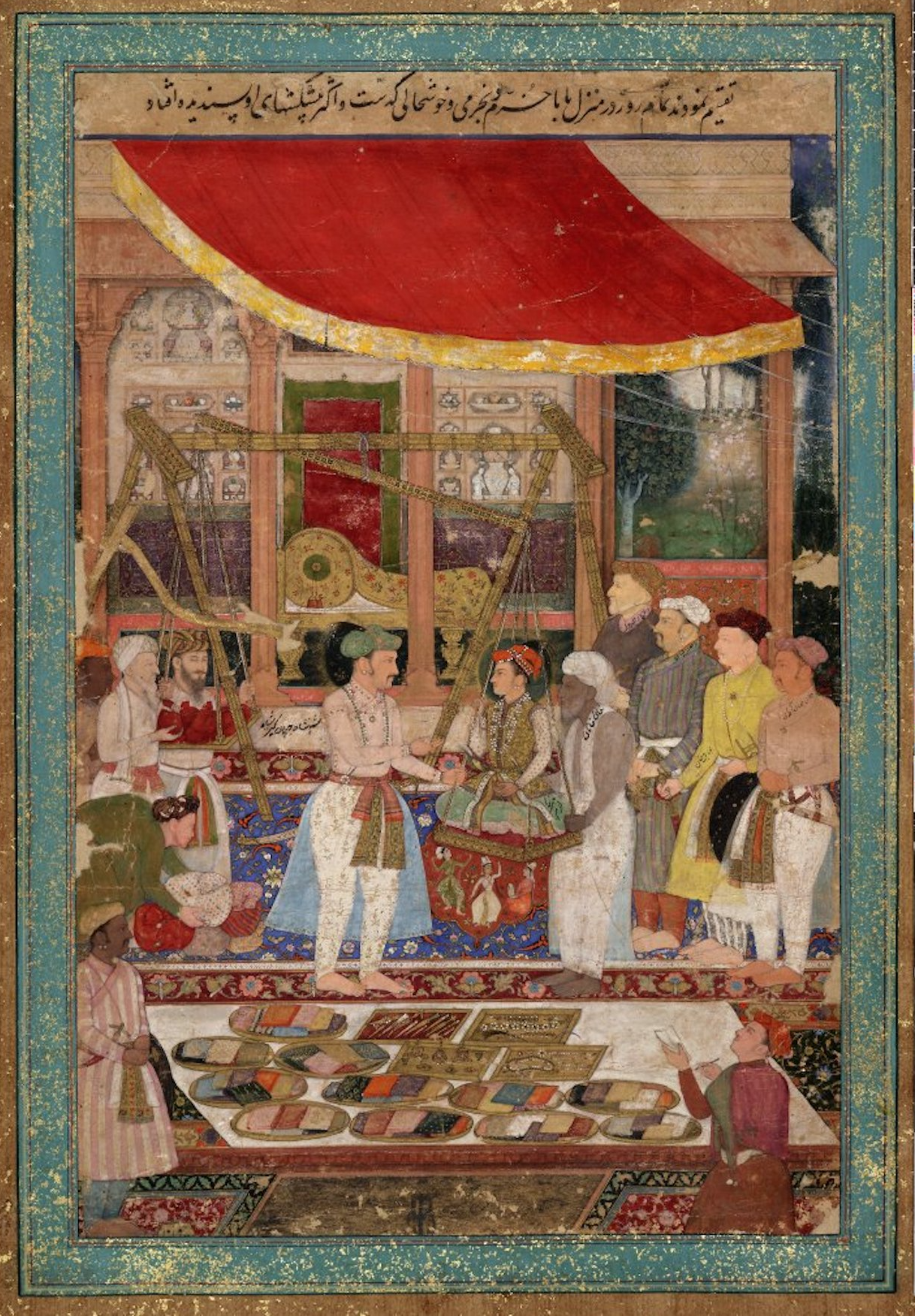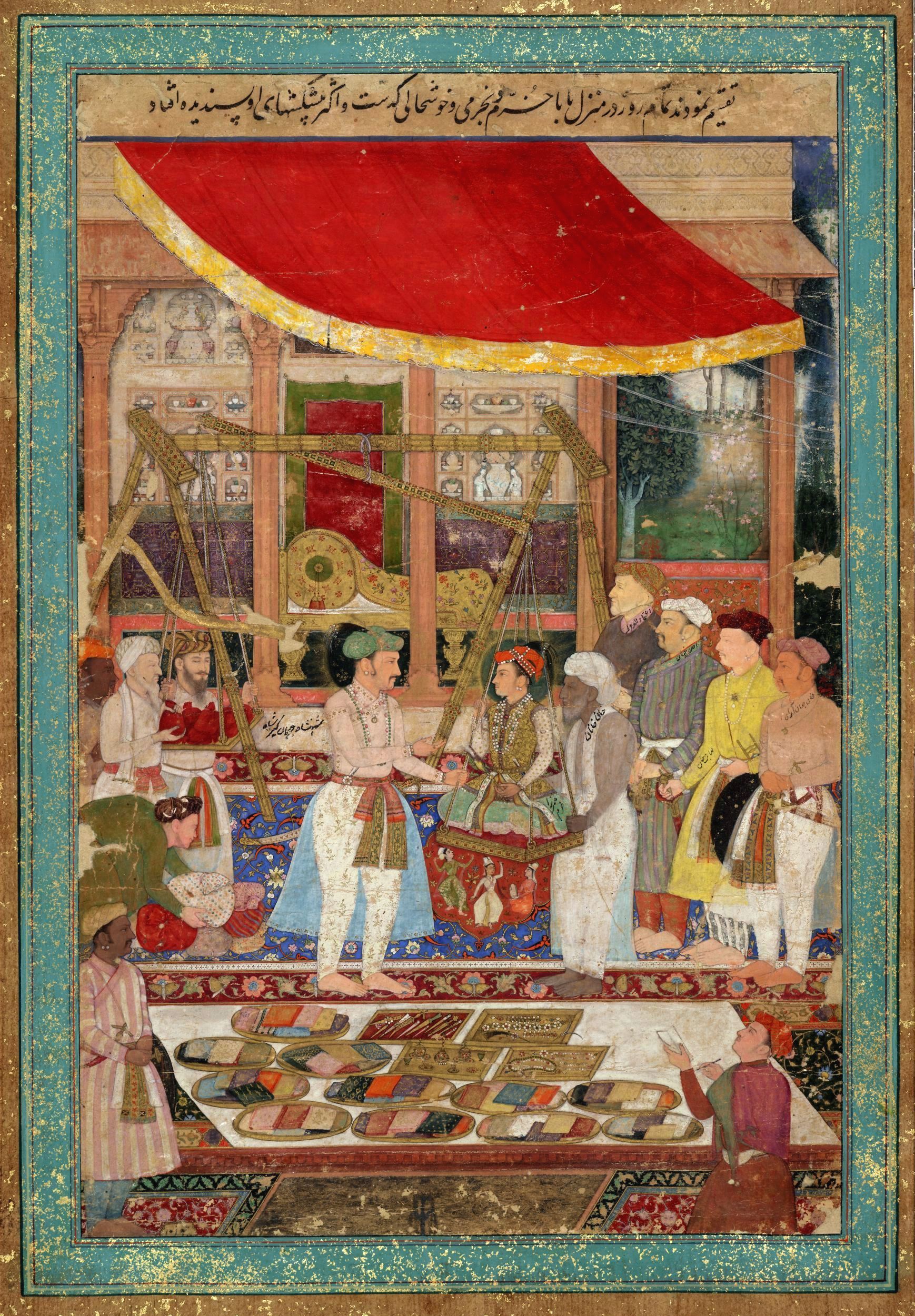This painting is rendered by the esteemed court painter Manohar who created many exquisite works as a member of the royal Mughal atelier, both under Akbar and his son, Jahangir. The painting depicts a ceremony instituted in the Mughal courts by Akbar. It was conducted at an auspicious hour calculated by court astrologers and the Emperor or one of his sons would be weighed in a large balance scale against gold, silver, or other precious metals that were given to the poor.
The young boy sitting on the balance scale here is the young Prince Khurram on the occasion of his 15th birthday celebration on July 31, 1607. The setting is a pavilion or garden under an ornate canopy or shamiana. Trees and foliage are visible on the upper-right side, peeking through the architectural details. Prince Khurram is seated cross-legged on one of the pans of the scale and there are several bags of gold and silver on the other pan. There are several more bejeweled trays laid out in the foreground of the painting, filled with rich textiles, bejeweled daggers and knives, cups and saucers, and fine jewelry also intended for charity. The officials and dignitaries in attendance are identified by their names written on them in the Nasta’līq script. Court priests hold the ropes of the scales and recite prayers and blessings for the young Prince. Prince Khurram would grow up to became Shah Jahan, the builder of the Taj Mahal.
The great wealth of the Mughals is apparent in the ostentatious display of wealth, the architecture, the ornate balancing scales and the rich carpets adorning the pavilion. Manohar's intricate details on the patterns of the clothes, the shamiana, the carpets as well as the ornate border are mesmerizing—note the figures of the three women dancing that appears on the carpet directly under Prince Khurram!
- Maya Tola
P.S. See more beautiful miniature paintings of the Mughal Empire here. <3
P.S.S. Are you scared of the coronavirus outbreak? Read our newest article: Plague in Art: 10 Paintings you should know in the times of coronavirus.


 Manohar
Manohar